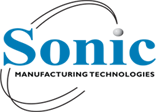
3 Future Trends in Printed Circuit Board Technologies
As experts in the manufacture and assembly of printed circuit boards (PCBs), Sonic Manufacturing is committed to keeping up with the latest trends in this industry. While you might not think that printed circuit boards have many options in terms of evolution, you’d be surprised. As electronic devices become smaller, thinner and lighter, circuit boards must adapt as well.
As we head into 2022, here are three future trends that we see dominating the PCB industry.
1. Flexible Printed Circuit Boards
Between wearable electronics, medical devices, cameras and motion systems, flexible PCBs are becoming the go-to choice. Flexible PCBs can handle more stress than rigid PCBs and can even be folded into awkward spaces. This makes them very useful for modern-day electronics.
Furthermore, flex PCBs have high heat resistance, making it a great fit for solder mounting components. While rigid PCBs have a purpose in computers, laptops and mobile phones, we can expect the demand for their flex counterparts to be higher.
2. Biodegradable Printed Circuit Boards
Another trend we expect to see more of is biodegradable PCBs. Electronic waste is a huge concern, especially when you consider how many electronic devices a person goes through in their lifetime. Electronics are short-lived as it is, and many people walk around with a phone, laptop and smart watch at all times.
As a result of these electronics, we need a drastic solution to combat electronic waste. One way to do this is by changing PCBs themselves. This would include switching from traditional PCB materials to more environmentally friendly alternatives, including biodegradable printed circuit boards that are fully recyclable.
3. 3D Printed Circuit Boards
Over the past decade, 3D printing has gone from a niche prototyping tool to a process that allows for mass production. From complex graphic designs to 3D printed tools, 3D printing technology can be found across the majority of industries. PCB manufacturing is no exception.
3D technology allows PCB manufacturers to print a substrate item layer by layer and then add liquid ink onto the parts that contain electrical functionalities. 3D printing is a great choice for PCB manufacturing because it reduces human error and produces less waste. This is why we believe it will be part of the future.
Without a doubt, PCBs have come a long way over the years. As electronics continue to get smaller, slimmer and lighter, we can anticipate that printed circuit boards will adapt as well. With new technology, PCBs can be flexible, efficient, precise, and hopefully one day, environmentally friendly.
CALL FOR A QUOTE
(510) 580-8500
OR EMAIL:
Sales@Sonicmfg.com
